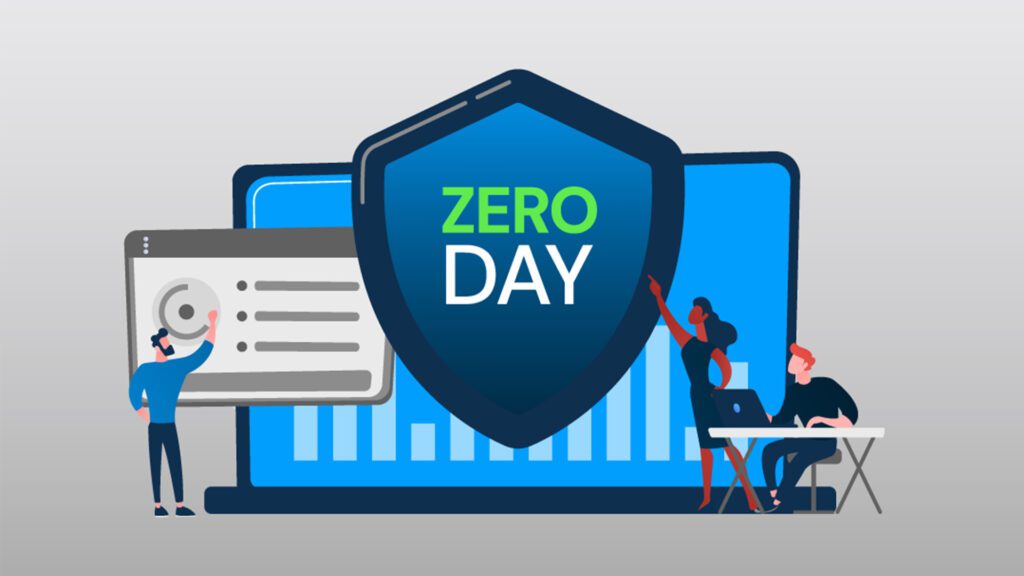
A zero-day exploit is one of the most formidable types of cyberattack types. Unlike other vulnerabilities that are known and can be mitigated with patches and updates, zero-day attacks target unknown programming holes in software, hardware, or firmware.
These attacks are called “zero-day” because the developers have zero days to fix the vulnerability before it’s exploited. Cybercriminals leverage these undiscovered flaws to launch attacks that cause significant damage, usually before anyone realizes the vulnerability exists.
Here we look at the mechanics of a zero-day exploit, their implications for individuals and organizations, and the strategies to employ to defend against these undiscovered threats.
What is a Zero-day Exploit?
A zero-day exploit is a cyberattack that targets a previously unknown vulnerability in software, hardware, or firmware. The term “zero-day” refers to the fact that developers have had zero days to address and patch the flaw because they were unaware of its existence.
Hackers can exploit these vulnerabilities to execute malicious actions like stealing data, taking control of systems, or installing malware without user knowledge.
The danger of zero-day exploits is in their ability to bypass traditional security measures. Since these vulnerabilities are undisclosed and unpatched, standard antivirus programs and firewalls may not detect or prevent them.
This exposure window leaves systems especially vulnerable because there is no available defense against the exploit until someone develop and distributes a patch.
Zero-day exploits can have significant consequences for individuals and organizations. For businesses, a successful zero-day attack can lead to data breaches, financial losses, and reputational damage.
For individuals, it can result in identity theft and privacy invasion. The complexity and sophistication of these attacks necessitate advanced detection and mitigation strategies, highlighting the ongoing challenge in cybersecurity to stay ahead of potential threats.
Typical Targets
While anyone can be a target for a zero-day attack, prime targets include enterprise organizations, individuals with valuable access like business data, information, and intellectual property, hardware, IoT and firmware devices.
Government agencies are also frequent targets, and sometimes even go on the offensive and use zero-day exploits to attack nation-states, organizations, or individuals that threaten national security.
Attack Vectors of Zero-day Exploits
Zero-day exploits deploy through various attack vectors, exploiting different types of vulnerabilities in systems.
These are some of the most popular attack vectors for zero-day exploits.
Phishing Emails
Phishing emails are a common delivery method for zero-day exploits. Attackers craft emails that appear legitimate, tricking recipients into clicking on malicious links or downloading infected attachments.
These emails exploit vulnerabilities in email clients or web browsers to install malware or gain unauthorized access.
Web Browsers
Web browsers are frequently targeted by zero-day exploits. Attackers can embed malicious code in websites that exploit browser vulnerabilities when visited. This leads to the execution of arbitrary code, allowing attackers to take control of the victim’s system.
Software Application Flaws
Popular software applications like office suites, media players, and productivity tools are often targeted. Vulnerabilities in these applications can be exploited through specially crafted files or documents that execute malicious code when opened.
Operating Systems
Zero-day exploits targeting operating system vulnerabilities can have widespread impact. They provide attackers with elevated privileges and control over the entire system. These exploits are delivered through various means, including malicious software updates or crafted network packets.
Network Services
Network services like servers and routers are common targets for zero-day exploits. Vulnerabilities in these services can be exploited to gain unauthorized access to networks, intercept communications, or disrupt services. Attackers may use techniques like SQL injection, buffer overflows, or remote code execution.
Mobile Devices
Mobile operating systems and applications are increasingly targeted by zero-day exploits. Attackers exploit vulnerabilities in mobile OSes or apps to gain access to sensitive data, eavesdrop on communications, or install malicious applications without the user’s consent.
Embedded Systems and IoT Devices
The rise of the Internet of Things (IoT) introduces new attack vectors. Vulnerabilities in embedded systems and IoT devices can be exploited to create botnets, launch distributed denial-of-service (DDoS) attacks, or gain unauthorized access to connected networks and devices.
Stages of a Zero-day Exploit
Zero-day exploits typically follow a series of stages that detail how attackers discover, develop, deploy, and execute attacks. Understanding these stages helps in recognizing the complexities involved and the need for a defense in depth cybersecurity strategy.
These are the typical stages of a zero-day exploit.
Discovery
The initial stage involves discovering and identifying a previously unknown vulnerability in software, hardware, or firmware. This can be done by security researchers, ethical hackers, or bad actors.
Weaponization
Once the vulnerability is identified, attackers create an exploit to leverage the weakness and gain unauthorized access or control over a system. This involves developing malicious exploit code that triggers the vulnerability.
Delivery
The exploit code is delivered to the target system through various attack vectors. Common methods include phishing emails, malicious websites, infected software updates, or compromised network services.
Exploitation
Upon successful delivery, the exploit executes on the target system. This stage involves taking advantage of the vulnerability to execute arbitrary code, gain elevated privileges, or perform other malicious actions.
Installation
After exploiting the vulnerability, attackers may install additional malware or backdoors to maintain persistent access to the compromised system. This helps them return to the system even if investigators discover and patch the initial exploit.
Command and Control
Attackers set up communication channels between the compromised system and their command and control servers. This allows them to send instructions, exfiltrate data, or deploy further payloads.
Actions on Objectives
Finally, attackers carry out their intended objectives, which can include data theft, espionage, destruction of data, or disruption of services. This stage can involve moving laterally within a network, escalating privileges, or exfiltrating sensitive information.
Conclusion
Zero-day exploits represent one of the most formidable challenges in the field of cybersecurity. The evolving nature of these exploits requires constant vigilance, advanced detection methods, and proactive measures to mitigate their impact.
Understanding the lifecycle of a zero-day exploit provides critical insights into how these attacks unfold and how to counter them.

